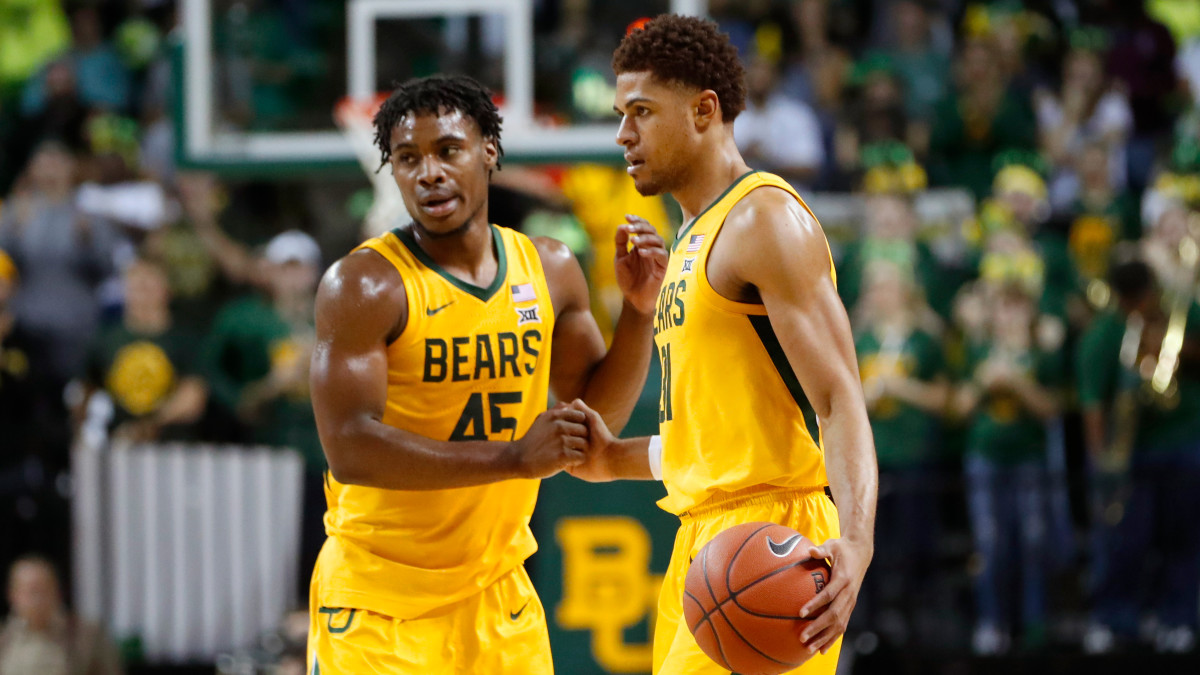Five Takeaways From Selection Committee's Current Top 16

Five quick takeaways from the NCAA tournament selection committee’s early Top 16 seeding reveal Saturday:
1. This is a diverse group, emblematic of a parity-driven season.
Nine leagues are represented, including three that would be considered mid-major: the West Coast Conference (Gonzaga), Mountain West (San Diego State) and Atlantic 10 (Dayton). Only six leagues were represented in the top 16 seeds when the actual 2019 bracket came out.
No conference has more than three of the top 16 seeds, with the Big 12, Atlantic Coast and Big East conferences all getting a trio of spots. The Big Ten, for all its depth and the prospect of as many as a dozen teams landing NCAA bids, is not dominant at the top. Only two teams are in the top 16 (Maryland and Michigan State), and with the Terrapins as a No. 3 seed and the Spartans a No. 4 at present.

2. The committee sees it like everyone else: the ACC is way down this season.
Last year, the sport’s flagship league had five of the top 16 seeds, including three No. 1s. One of those top seeds (Virginia) went on to become the 2019 national champion. As of today, the committee doesn’t have an ACC team on the No. 1 seed line—if that holds it will be the first time since 2013 that the conference hasn’t had a No. 1 seed. (And even then, top seed and eventual national champion* Louisville was on its way into the conference in 2014.)
The current ACC seeds are a pair of No. 2s, Louisville and Duke, and a No. 3, Florida State. Even more daunting for the conference is the possibility that they might be the only three teams to earn bids. That may change down the stretch, but the usual pattern of piling of quality wins within league play doesn’t really apply when there are so few quality teams.
3. As anticipated, the committee is prepared to ship a West Coast heavyweight out East.
NCAA vice president for men’s basketball Dan Gavitt told Sports Illustrated Wednesday that the usual March migration pattern of the sport could well be reversed in 2020. Often, the committee has sent a team from the East or Midwest out to be the top seed in the West Regional. This year, with both Gonzaga and San Diego State among everyone’s top four teams, one of them will be headed out of region if that holds.
As of Saturday, that team is San Diego State. The committee made the undefeated Aztecs the No. 1 seed in the East, which would mean a long commute from Southern California to New York City and Madison Square Garden if it comes to pass.
4. The committee like its NET Ratings, and it showed.
Gavitt and selection committee chair Kevin White sang the praises of the NCAA NET ratings to SI, especially in comparison to the old RPI metric. “We threw out the flip phone and we’re using the iPhone,” Gavitt said. “It’s just more representative than the RIP, which was overly simplistic and dated.”
This is the second year of the NET, and the committee’s seeding pretty faithfully reflected what that algorithm has produced. Fourteen of the top 16 seeds are in the NET top 16, with the only exceptions being No. 4 seeds Auburn (17th in the NET) and Oregon (19th).
The highest-ranking team in the NET to be left out of the top 16 is Arizona, which is No. 8 in the NET.
Committee members said they are using a host of metrics in their analysis. Among the details they are looking for: a team that is ranked significantly higher or lower in one set of rankings than the others. In those cases, they will dig in to see if there is something one metric is valuing that the others are missing.
“Put it all together and people have a lot of different places to look for insight,” White said. “Hopefully we arrive at a place that is right, or as close to right as we can get.”
5. For my money, the toughest region the committee constructed Saturday is the South.
Going into Saturday games, the top three seeds in that region all lead their conference: Baylor leads the Big 12 and is the committee’s overall No. 1 seed. Second seed Louisville tops the ACC. Third seed Seton Hall is leading the pack in the Big East. Fourth seed Auburn was tied for second in the SEC.
The catch: only one of those four is led by a coach who has been to the Final Four—Bruce Pearl, who took Auburn there last year. Two coaches in the Midwest have Final Four experience (Bill Self of Kansas and Tom Izzo of Michigan State, both of whom have won national championships at their schools); one in the East (Mike Kryzewski, who has won five national titles); and all four in the West (Mark Few of Gonzaga, Bob Huggins of West Virginia, Jay Wright of Villanova and Dana Altman of Oregon).
